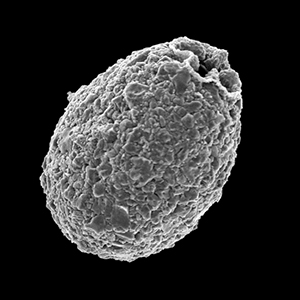First ecological analysis of lacustrine testate amoebae in Guatemala: A case study from the highland Lake Chichoj

All claims expressed in this article are solely those of the authors and do not necessarily represent those of their affiliated organizations, or those of the publisher, the editors and the reviewers. Any product that may be evaluated in this article or claim that may be made by its manufacturer is not guaranteed or endorsed by the publisher.
Authors
Freshwater quality represents a central issue for human populations and the conservation of aquatic communities. In this sense, freshwater reservoirs, such as lakes, require proper management and monitoring plans to avoid their deterioration and pollution. Bioindicators, such as testate amoebae, are an excellent tool increasingly utilized for limnology and paleolimnology to assess the trophic status of lacustrine environments. However, despite their potential as bioindicators, the ecological research status of testate amoebae in Central American lakes remains poor. We conducted our research at highland Lake Chichoj, Alta Verapaz, Guatemala, which has become increasingly eutrophic since the 1980s. This study contributes to fill the knowledge gap about neotropical testate amoebae, parallel to testing their utility as bioindicators of lacustrine conditions. From a collection of 12 surface sediment samples (associated with different land uses), we found 19 testate amoebae taxa, and for the first time in Guatemala, we recorded Arcella megastoma, Arcella gibbosa, Cucurbitella tricuspis, Difflugia protaeiformis strain “acuminata”, Difflugia urceolata strain “elongata”, Lesquereusia spiralis, Lesquereusia modesta, and Mediolus corona. Our cluster analyses revealed three testate amoebae assemblages in connection to trophic conditions: 1) Stressed Conditions (SC), 2) Lowest Contamination Conditions (LC), and 3) Deep Transitional Conditions Assemblage (DT). After performing a transformation-based redundancy analysis (tb-RDA), we found total organic carbon as the only significant environmental parameter associated with testate amoebae assemblages (p<0.004). Our indicator species analysis (IndVal) confirms the eutrophic regime of Lake Chichoj in connection to the presence of Cucurbitella tricuspis and Centropyxis aculeata strain “aculeata” as indicators of nutrient enrichment and stressful conditions. The testate amoebae assemblages identified in Lake Chichoj represent a critical baseline for future studies of Guatemalan lakes, strengthening our understanding of the causal factors behind water quality in neotropical regions.
Edited by
Alberto Doretto, Department of Environmental and Life Sciences, University of Piemonte Orientale “Amedeo Avogadro”, Alessandria, ItalySupporting Agencies
Secretaria Nacional de Ciencia y TecnologiaHow to Cite

This work is licensed under a Creative Commons Attribution-NonCommercial 4.0 International License.







